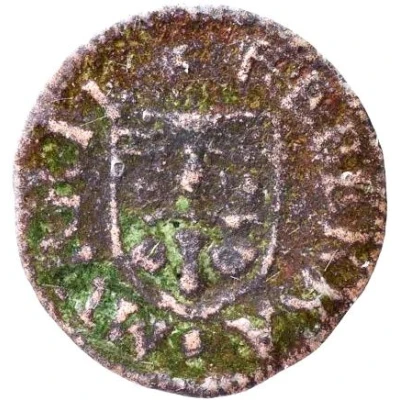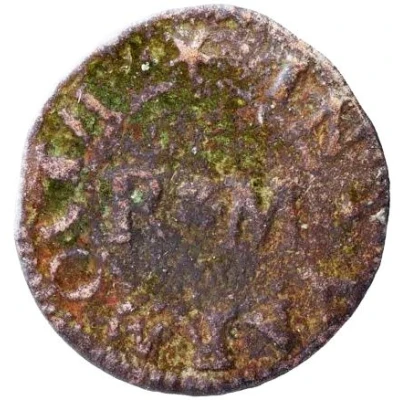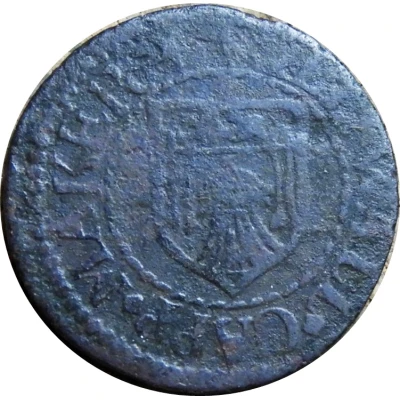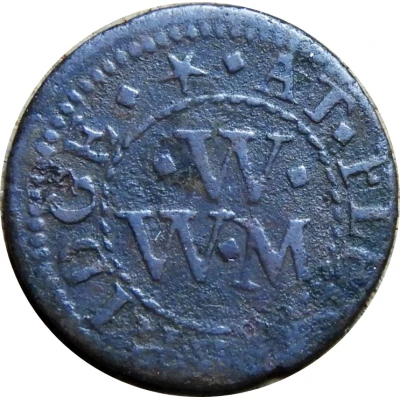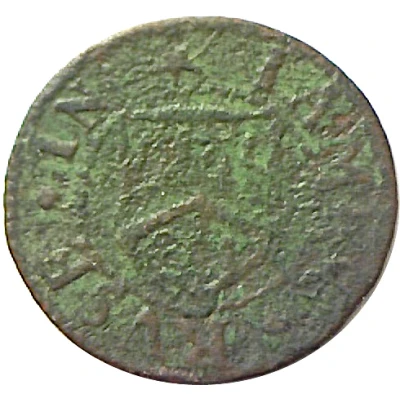
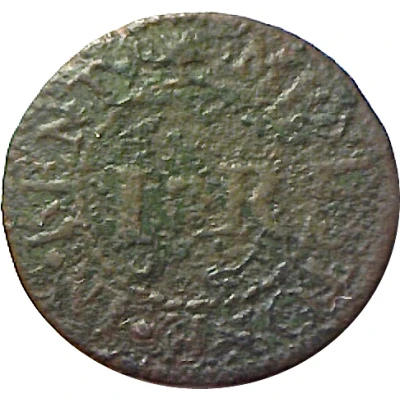

© ZacUK
Farthing - Kent Maidstone / J. Ruse ND
| Copper | 0.68 g | 15 mm |
| Issuer | England (United Kingdom, British Overseas Territories and Crown Dependencies) |
|---|---|
| Type | Token |
| Years | 1648-1672 |
| Value | 1 Farthing (1⁄960) |
| Currency | English Trade Tokens (1648-72) |
| Composition | Copper |
| Weight | 0.68 g |
| Diameter | 15 mm |
| Thickness | 0.5 mm |
| Shape | Round |
| Orientation | Coin alignment ↑↓ |
| Demonetized | 1674 |
| Updated | 2024-10-08 |
| Numista | N#89552 |
|---|---|
| Rarity index | 92% |
Reverse
Merchant's initials within inner circle, legend around, beaded border.
Script: Latin
Lettering:
MEYDSTONE ♦ IN ♦ KENT *
I [rosette] R
Translation: Maidstone In Kent
Edge
Plain
Comment
Arms of the Worshipful Company of Grocers: Argent, a chevron gules between nine cloves proper six in chief and three in base. The church of St Mary the Virgin at Northill in Bedfordshire shows the Grocers' coat of arms on a stained glass window by John Oliver. The company commissioned the window in 1664.
Catalogue: M. Dickinson 385. Same die reverse as Norweb 2633. (N 2632).
Throughout the period of issue for the trade tokens, there were often plans by the Crown to produce farthings, it was only in 1672, that the first was finally issued. On the 16th August 1672, a proclamation was made by the crown, ordering the minting of trade tokens to cease, a further proclamation was issued in 1673, but it was only with the issue of a third proclamation in 1674, that the issue of trade tokens finally ceased. By this time the use of trade tokens had once again, begun to fall, so the latest dates for tokens, are relatively rare.
Interesting fact
One interesting fact about the Token Farthing - Kent (Maidstone / J. Ruse) ND (1648-1672) coin is that it was issued during a time of great economic turmoil in England, known as the "Commonwealth" period (1649-1660). This coin was one of many token coins issued by private traders and local authorities to address a shortage of small change, as the official royal mint was not producing enough coins to meet the needs of the economy. The coin's design features a crowned bust of King Charles II on the obverse and a shield with the Kent coat of arms on the reverse. Despite its humble appearance, this coin is a valuable piece of history, offering a glimpse into the economic and political climate of 17th-century England.
